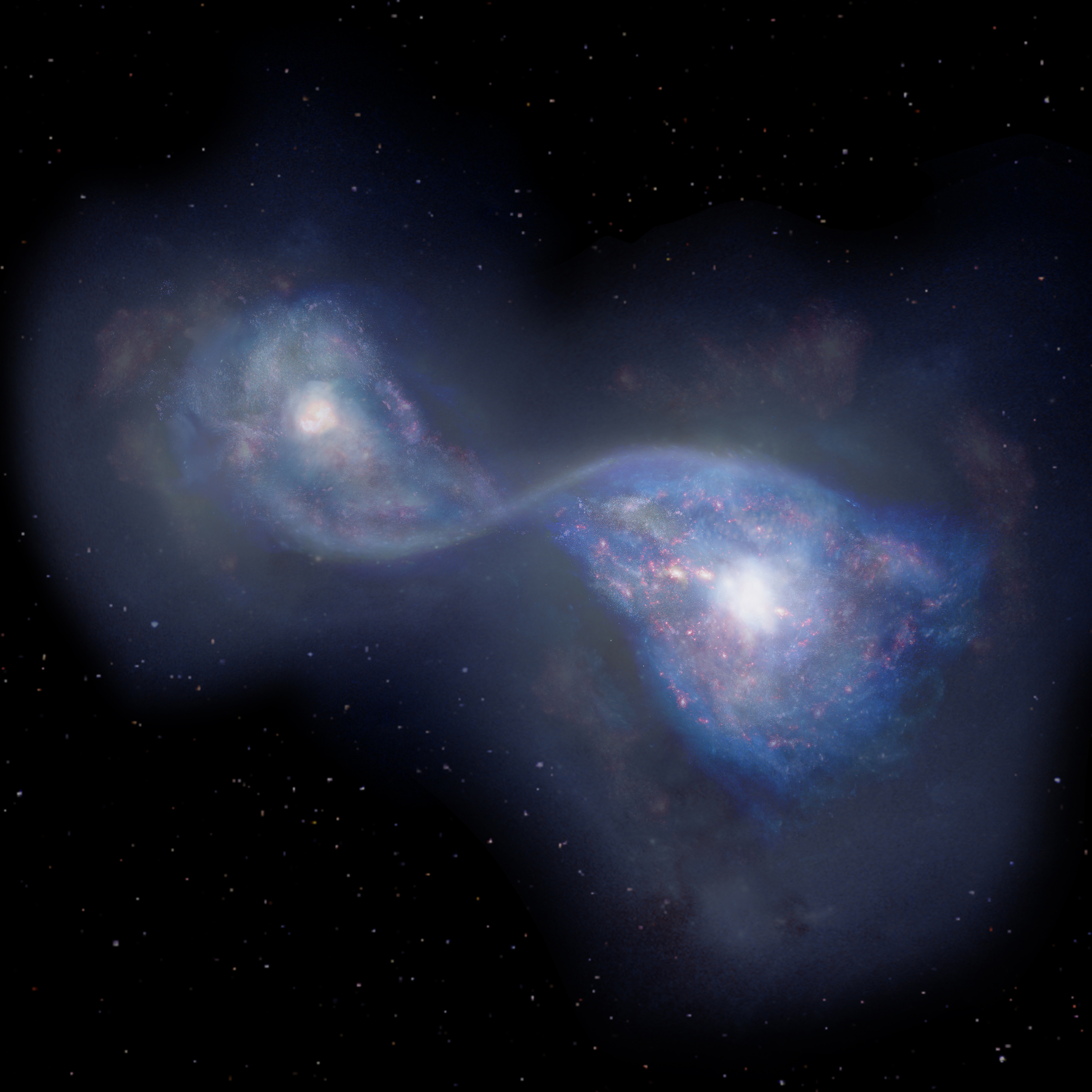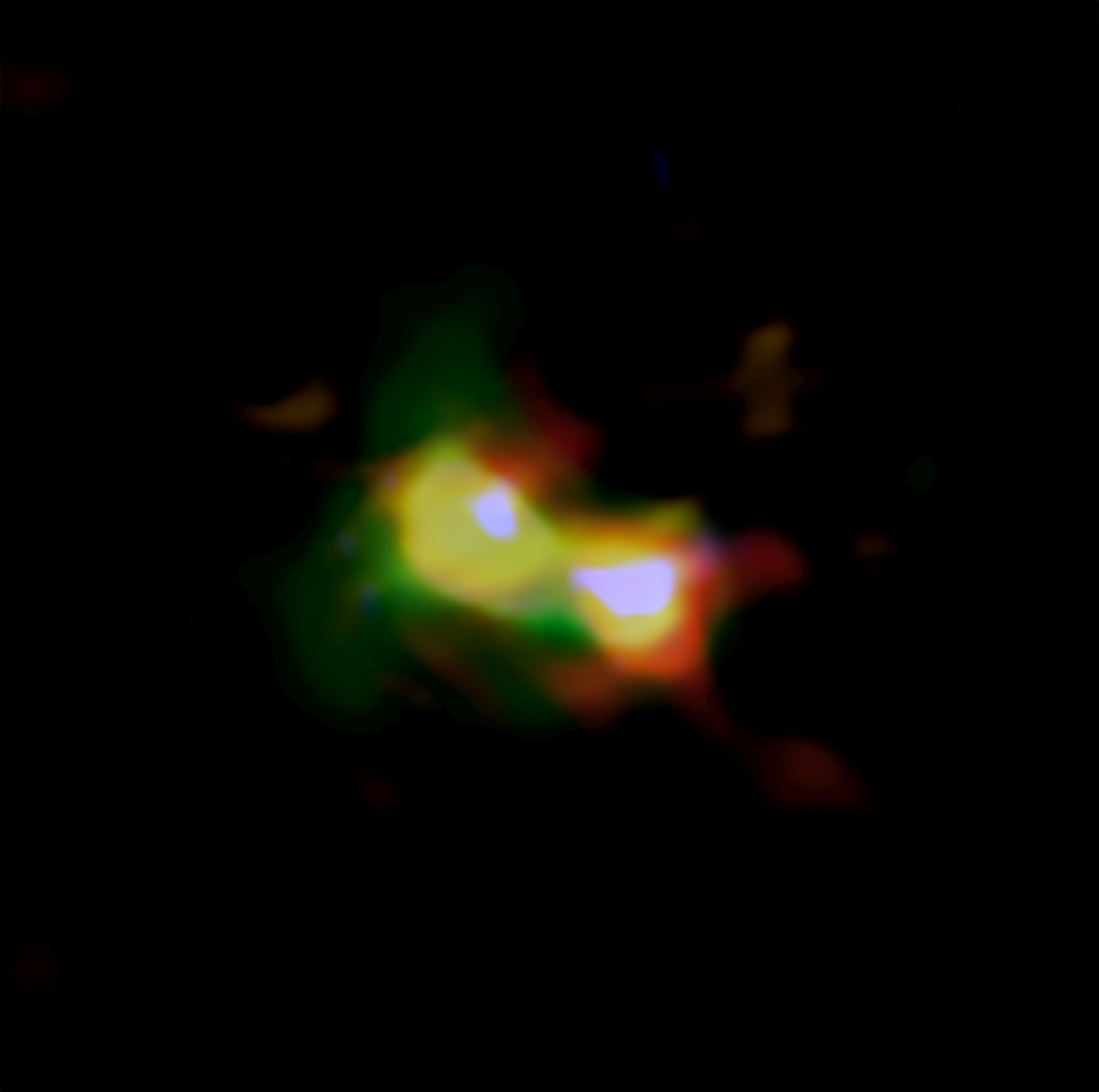Oldest Known Galactic Get-Together Occurred Shortly After Big Bang

Signals written in elements from the early universe have revealed the oldest known merger between two galaxies, taking place less than a billion years after the Big Bang.
Researchers recently turned to the Atacama Large Millimeter Array (ALMA) telescope in Chile to look for radio emissions from a distant but very bright star-forming galaxy known as B14-65666, located about 13 billion light-years from Earth. Prior observations in the ultraviolet spectrum by the Hubble Space Telescope hinted that the galaxy contained two "clumps" of stars, the northeastern "Clump A" and the southwestern "Clump B."
New observations using ALMA, a highly sensitive radio telescope, identified three distinctive signatures in each of the two clumps: those from carbon, oxygen and dust. (The three sources all produce distinctive signals in radio waves.) Such signals have never been found in a galaxy this old; variations between those signals told the scientists that B14-65666's dual clusters represented two galaxies that had merged before the universe was even a billion years old, the researchers reported in a new study. [15 Unforgettable Images of Stars]
Located in Chile's Atacama Desert, ALMA uses 66 ground-based antennas to detect some of the universe's coldest and most distant objects, scanning the skies with an "eye" that is 10 times sharper than Hubble's, according to the European Space Agency.
ALMA's observations of B14-65666 uncovered signals that were invisible to Hubble. Though the study authors detected dust, carbon and oxygen in both galactic clumps, emissions from Clump A moved at a different velocity than the same emissions in Clump B.
This suggested to the scientists that the clumps were the remnants of two galaxies that had collided in "a major merger" that was still underway, making B14-65666 the oldest known example of a galactic collision, the scientists wrote.

They also noted that the high temperatures of the dust and the brightness of B14-65666 likely resulted from powerful ultraviolet radiation caused by extremely active star formation. The galaxy is about 100 times more active than the Milky Way, even though the Milky Way is the bigger galaxy by about 90%, the researchers reported.
Get the Space.com Newsletter
Breaking space news, the latest updates on rocket launches, skywatching events and more!
This provides yet another piece of evidence that this galaxy formed from a collision, as galactic mergers typically produce a frenzy of star births from the heightened gas compression due to the impact, according to the study.
"With rich data from ALMA and HST [Hubble Space Telescope], combined with advanced data analysis, we could put the pieces together to show that B14-65666 is a pair of merging galaxies in the earliest era of the universe," lead study author Takuya Hashimoto, a postdoctoral researcher with the Japan Society for the Promotion of Science and Waseda University in Tokyo, said in a statement.
The quantity and quality of the data available from B14-65666 make it a good candidate for further study, the researchers said. Next steps could include searching for the chemical fingerprints of nitrogen and carbon monoxide molecules to assemble a more detailed picture of how the earliest galaxies formed and evolved, study co-author Akio Inoue, a professor at Waseda University, said in the statement.
The findings were published online Monday (June 17) in the journal Publications of the Astronomical Society of Japan.
- The 12 Strangest Objects in the Universe
- The Best Space Photos Ever: Astronauts & Scientists Weigh In
- Photos: 65 All-Time Great Galaxy Hits
Originally published on Live Science.
Join our Space Forums to keep talking space on the latest missions, night sky and more! And if you have a news tip, correction or comment, let us know at: community@space.com.











